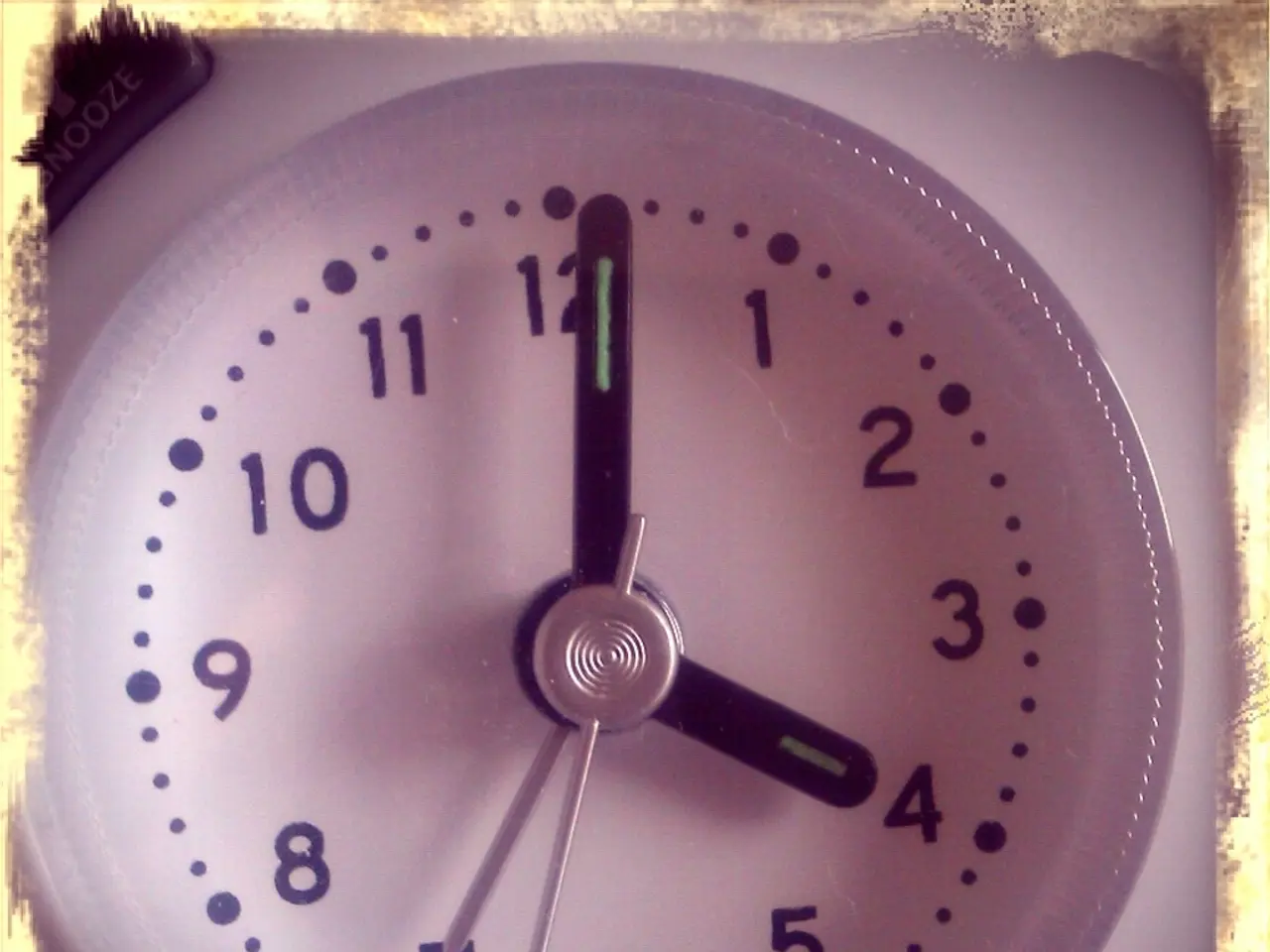Exploring the Clock Reaction Test: A Comprehensive Student's Handbook
The Clock Reaction, a captivating chemical experiment, offers a unique opportunity for students to delve into the fascinating world of reaction kinetics. This experiment, which involves mixing two clear solutions that react after a certain time delay, resulting in a visible change, usually a color change, is an essential tool in chemistry labs.
By performing the Iodine Clock Reaction, students can visually demonstrate reaction kinetics. The timing of the color change depends on reactant concentrations and temperatures. To deepen their understanding, students vary concentrations systematically, observing how the rate changes when mixing solutions with different concentrations.
The color change itself serves as a visual timer, allowing students to time the reaction stage precisely. Employing the initial rate method, they measure how fast the color change occurs immediately after mixing to calculate reaction rates quantitatively.
Controlling temperature is another crucial aspect. Using water baths or controlled environments, students study how temperature influences the reaction speed, with real-time monitoring of reaction progress. Safety and precision in setup are paramount, including wearing eye protection, using clean measuring cylinders, and covering reaction flasks to avoid exposure to harmful gases.
Data analysis is a vital step in understanding the Clock Reaction. Students calculate reaction rates based on the inverse of the clock time and may use equations to describe species concentrations over time. This process ensures accurate measurement and reproducibility, enabling learners to visualize and quantify the kinetics of the Clock Reaction effectively.
RevisionDojo, an online resource, provides detailed explanations of kinetics and the Clock Reaction, step-by-step guides for lab reports and experiments, and practice questions and mock tests on reaction rates. Students plot graphs to understand the relationship between variables and reaction rates in the Clock Reaction, reinforcing theoretical chemistry concepts in a hands-on way.
Repeating trials for accuracy is essential in the Clock Reaction experiment. Maintaining precise timing and consistent conditions is crucial to gather reliable data. Connecting experimental data to chemical theory is essential in understanding the Clock Reaction. The Clock Reaction demonstrates how reaction rates can be affected by concentration, temperature, and catalysts, offering a comprehensive understanding of reaction kinetics.
Proper safety procedures should be followed when handling chemicals in the Clock Reaction experiment. With these methods in hand, students can embark on a captivating journey of discovery, unraveling the secrets of the Clock Reaction and deepening their understanding of chemical kinetics.
To supplement their learning in chemical kinetics, students can access online education platforms such as RevisionDojo, which offer practice questions and mock tests related to reaction rates in the context of the Clock Reaction. Moreover, science education and self-development can be enhanced by completing online-education modules that provide step-by-step instructions for performing the Clock Reaction, as well as guidelines on data analysis and safety procedures.




